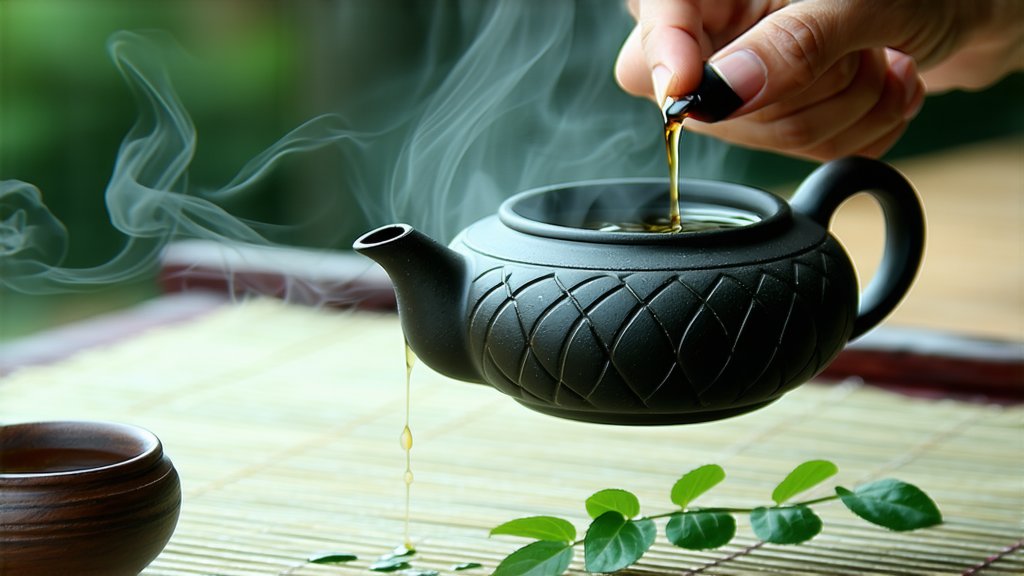
Tieguanyin, often referred to as the "Iron Goddess of Mercy," is one of the most celebrated varieties of Oolong tea hailing from the lush mountains of Anxi County in Fujian Province, China. This exquisite tea not only embodies the rich cultural heritage of Chinese tea-making but also stands as a testament to the artistry and precision involved in its production. In this article, we delve into the historical roots, diverse types, intricate manufacturing process, and the nuanced art of appreciating Tieguanyin Oolong tea.
Historical Roots
The origins of Tieguanyin can be traced back to the early Qing Dynasty (1644-1912), with its name believed to have been bestowed by Emperor Qianlong during his reign. Legend has it that the emperor was so enamored by the tea's unique flavor and aroma that he likened it to the compassionate nature of the Iron Goddess of Mercy, thereby giving it its distinctive name. Over centuries, Tieguanyin has evolved, becoming synonymous with high-quality Oolong tea and earning international acclaim for its complexity and depth.
Types of Tieguanyin
Tieguanyin encompasses several sub-varieties, each with its own distinct characteristics influenced by factors such as altitude, soil composition, and cultivation methods. The primary types include:
- Xiangxing (Fragrant Type): These are known for their floral and fruity aromas, often reminiscent of orchids or osmanthus blossoms.
- Dancui (Single Cultivar): Grown from a single tea plant variety, these offer a more consistent flavor profile and are prized for their purity and elegance.
- Shuixian (Narcissus Type): Recognized by their robust body and slightly sweet aftertaste, they resemble the scent of narcissus flowers.
Each type reflects the terroir of its origin, showcasing the diversity within the Tieguanyin category.
The Art of Crafting Tieguanyin
The journey from leaf to cup is a meticulous process that involves multiple stages:
- Withering: Freshly picked leaves undergo partial wilting under controlled conditions to reduce moisture content and initiate enzymatic activity.
- Bruising: Leaves are gently shaken or rolled to damage cell walls, allowing enzymes to interact with oxygen and initiate oxidation.
- Fixation: Heat is applied through pan-firing or roasting to halt oxidation, preserving the greenish-brown color characteristic of Oolong teas.
- Tossing and Turning: Repeated tossing and turning help distribute heat evenly and further shape the leaves.
- Drying: Final drying removes any remaining moisture, ensuring stability and longevity of the tea.
This careful balance of craftsmanship results in a tea that boasts a complex interplay of flavors and aromas, making every sip a sensory delight.
Appreciating Tieguanyin: The Gongfu Tea Ceremony
To truly appreciate Tieguanyin, one must engage in the traditional Gongfu tea ceremony, a practice that emphasizes mindfulness and respect for the tea. Here’s a step-by-step guide:
- Warm the Teaware: Begin by rinsing the teapot and cups with hot water to cleanse them and maintain the brewing temperature.
- Measure the Tea: Use approximately 5 grams of Tieguanyin per 100ml of brewing vessel.
- Rinse the Leaves: Briefly rinse the tea leaves with boiling water to awaken their flavors and discard this first infusion.
- Steeping: For subsequent infusions, pour hot water (around 95°C) over the leaves and let steep for 15-30 seconds for the initial brew, gradually increasing steeping time for later infusions.
- Pouring & Savoring: Decant the tea into a fairness cup before serving to ensure an even distribution of flavors. Sip slowly, allowing the tea to coat your palate fully.
Through these steps, one can experience the full spectrum of Tieguanyin's flavors—from its initial floral notes to its lingering sweet aftertaste and the subtle astringency that characterizes fine Oolong teas.
In conclusion, Tieguanyin Oolong tea is not merely a beverage; it is an exploration of tradition, craftsmanship, and sensory pleasure. Its history intertwines with that of Chinese culture, while its production showcases the skill and dedication of tea artisans. Whether you are a seasoned tea connoisseur or a curious newcomer, engaging with Tieguanyin offers a window into the soul of Chinese tea culture and invites you to savor the moment, one sip at a time.